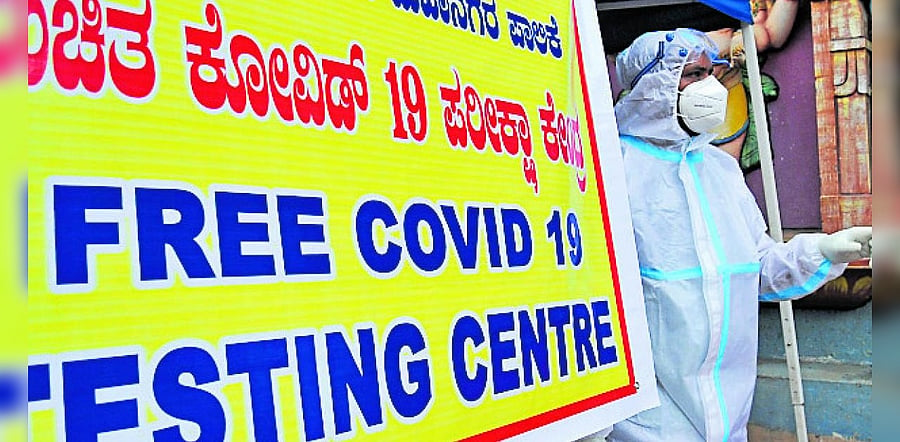
A recent headline presented an alarming fact—25 people died every hour due to Covid-19 in India in July. By comparison, there are about 50 deaths per hour due to Tuberculosis; 82 death per hour of infants below the age of 1; and about 300 people die every hour, every day due to hunger. It is estimated by the Brookings Institution that between 100,000 to 200,000 children have missed their immunizations during the pandemic in India. Stop TB Partnership estimates that there could be 6-20% increase in TB mortality as a result of interruptions in treatment due to lockdowns and other disruptions to routine health services. Without a doubt, the spectre of hunger looms large on countless people as a result of the lockdown and loss of livelihood. We can only imagine how many more deaths these causes might ensue.
The reasons for this hourly carnage have been analysed elsewhere. For example, weak primary health care delivery, including poor health infrastructure and uneven access to maternal health care, have been shown to put the lives of infants at risk. Two-thirds of infant deaths are associated with malnutrition and health vulnerabilities that come with poor sanitation and lack of immunization. Similarly, with TB, overcrowding, poorly-built living environments, indoor air pollution, malnutrition and poor access to services have all been contributors to the high mortality rates. In short, these are conditions that largely affect the poor.
This, perhaps, brings us to the crux of the issue, and the key difference between ‘diseases of the poor’ and Covid-19. This virus does not apparently respect any of the usual marks of privilege. Superstars, Chief Ministers, captains of industry, international travellers and IT professionals are finding themselves uncomfortably occupying the same boat as poor migrants, vegetable sellers, security guards and household help. The ongoing media coverage, intense scrutiny of epidemiological data and trends, as well as the successive lockdowns highlight the sense of urgency and perception of risk felt by all sections of society. While the poor have been most vulnerable to hardship due to loss of livelihood and displacement, nobody has been spared the income insecurity, loss of freedoms and dread of infection that have come in the wake of the virus.
This is not a new phenomenon. For centuries, TB was a disease that afflicted people irrespective of their race, gender or socio-economic class. In the 19th century, it was a common condition among English troops stationed in India, and later spread to the natives as well. Open-air sanatoria where patients could be isolated and quarantined were available to the lucky few who could afford it. By the middle of the 20th century, a range of medications as well as a vaccine became available for the prevention and treatment of TB. As a result, there has been an overall decline in TB prevalence, but it persists stubbornly among one particular group—the poor. WHO has identified poverty, and its attendant poor living conditions, malnutrition and stress, as critical social determinants of TB. This is despite a well-established treatment protocol, supported by the government through the Revised National Tuberculosis Control Program since 1993.
With the possibility of a vaccine for Covid-19 coming closer, it is important to plan for equitable and just access. Experience with earlier vaccination programs indicates that this cannot be taken for granted—according to the UNICEF, only about 65% of children in India receive full vaccine coverage in the first year of their life. There are significant differences by geography—the large central states have the poorest coverage; girls are less likely to be vaccinated than boys, and the rural poor have the lowest coverage. And this is for a program that has been in place for decades — the Universal Immunization Program was launched in 1985. The Pulse Polio Program, intended to eradicate polio, was launched in 1995. It achieved its objective only sixteen years later, in 2011. Some of the reasons why it took so long included persisting open defecation, poor quality of water, weakness caused by malnutrition and repeated bouts of illness, all of which made children vulnerable to increased exposure to the poliovirus. Again, conditions that apply largely to the poor.
We have learned to live with the daily deaths caused by old, well-established diseases, and barely account for the social and economic devastation they cause. But India now has the opportunity to learn from experience, change the narrative and carefully plan the response. This will require investment in its public health network, ensuring the lability of all necessary resources —vaccines, cold chains, human resources, outreach networks —and thereby making testing, tracing, medical care as well as the vaccine, if and when it becomes available, equally accessible to everyone. Unless such investment is made urgently, there is a danger that Covid-19 might join the ranks of the other diseases that, over time, became relegated to being ‘diseases of the poor’.
(The writer is, Professor, Azim Premji University)